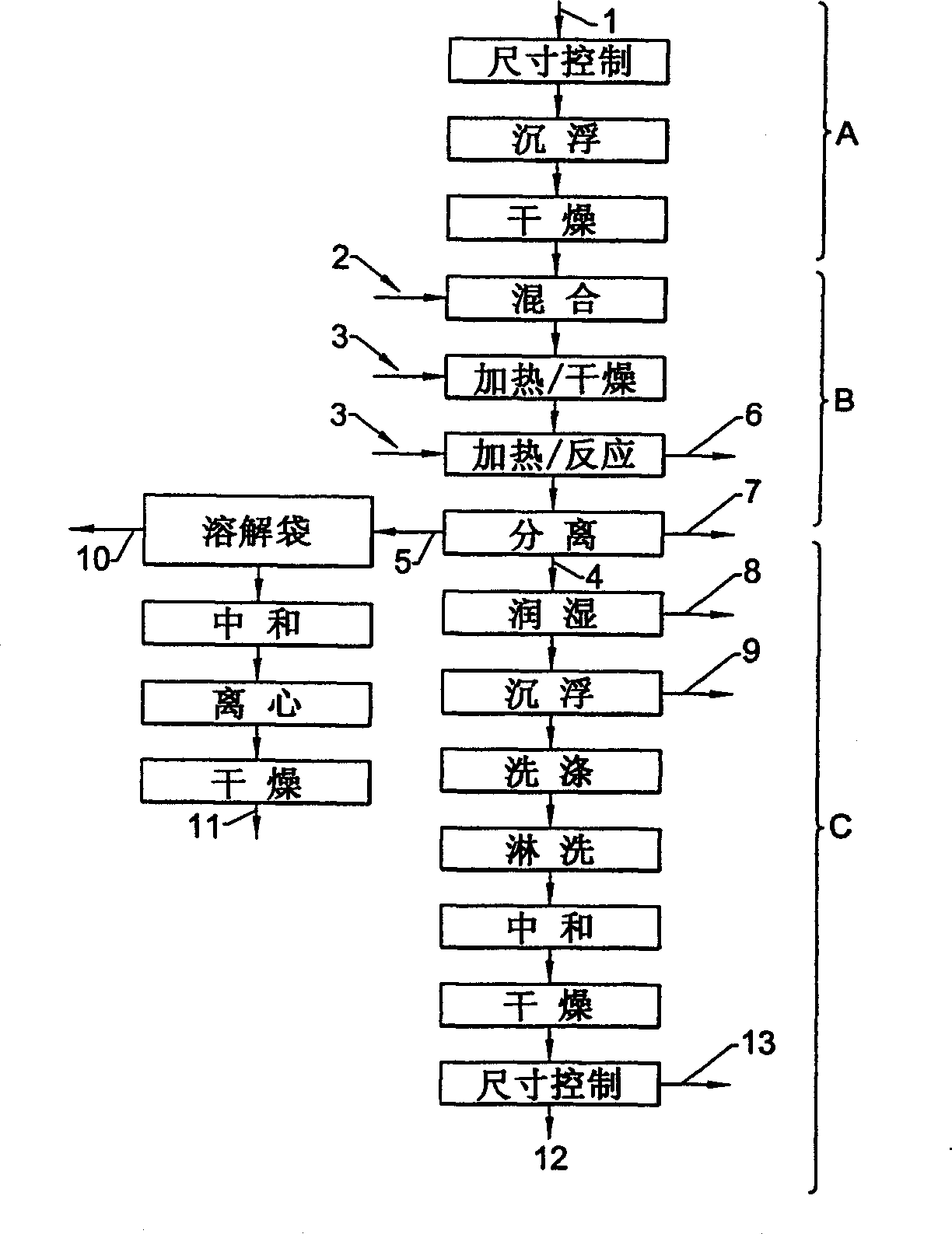Method for cleaning and decontaminating polyesters
A technology of polyester and polyethylene terephthalate, applied in the direction of products, educts, reagents, etc., can solve the problems of increasing basic costs
- Summary
- Abstract
- Description
- Claims
- Application Information
AI Technical Summary
Problems solved by technology
Method used
Image
Examples
Embodiment
[0071] 3,000 lbs of PVC-contaminated post-consumer PET bottles were ground into 3 / 8" nominal size flakes and added to a sinking tank to remove paper and polyolefin. The heavy fraction containing ground PET and PVC was mixed with 10% by weight of 50% sodium hydroxide solution was mixed and then fed into an electrically heated batch rotary kiln with a diameter of 54" and a heating length of 32'. The material was heated to 250°F while maintaining 600 cubic ft. / min of hot dry air purging the kiln (-80°F dew point, and 250°F temperature).
[0072] After 3 hours, the moisture content of the flakes was 0.2%, at which point the temperature of the flakes and air was raised to 400°F and held at that temperature for 9 hours.
[0073] The material is then cooled and added to a sink to remove degraded PVC. After sinking, the heavy fraction was washed with a REG MAC high shear washer for 2 minutes, followed by a rinse with a pH-4 phosphoric acid solution. After the acid rinse, the materia...
PUM
| Property | Measurement | Unit |
|---|---|---|
| melting point | aaaaa | aaaaa |
Abstract
Description
Claims
Application Information
 Login to View More
Login to View More - Generate Ideas
- Intellectual Property
- Life Sciences
- Materials
- Tech Scout
- Unparalleled Data Quality
- Higher Quality Content
- 60% Fewer Hallucinations
Browse by: Latest US Patents, China's latest patents, Technical Efficacy Thesaurus, Application Domain, Technology Topic, Popular Technical Reports.
© 2025 PatSnap. All rights reserved.Legal|Privacy policy|Modern Slavery Act Transparency Statement|Sitemap|About US| Contact US: help@patsnap.com

